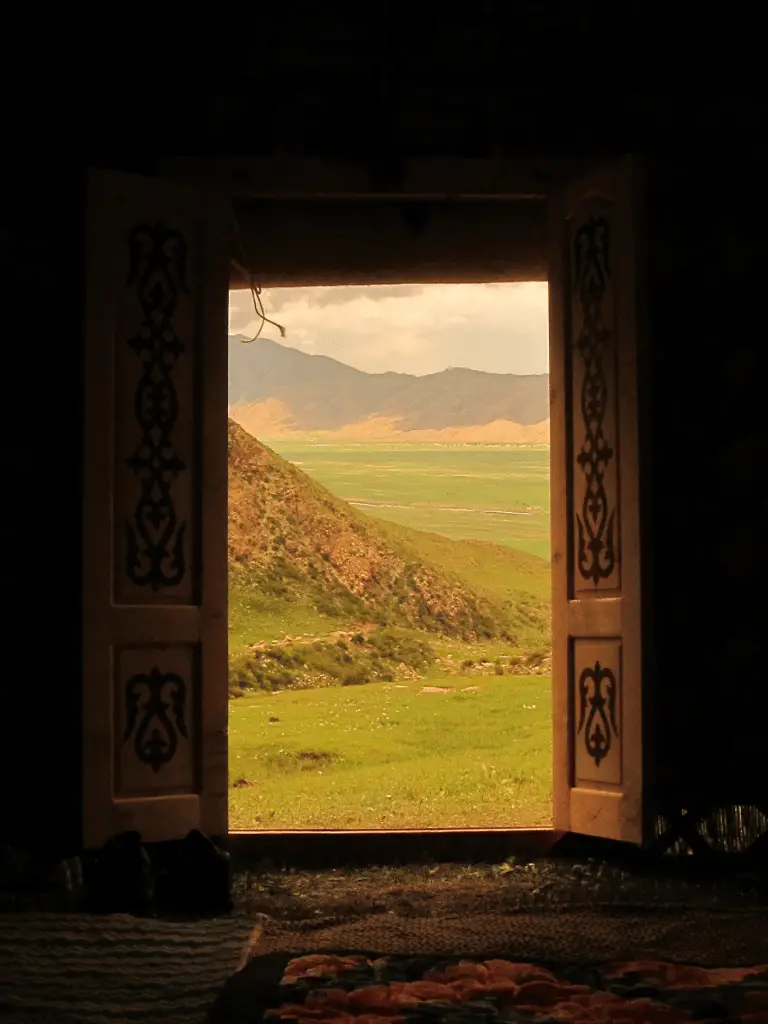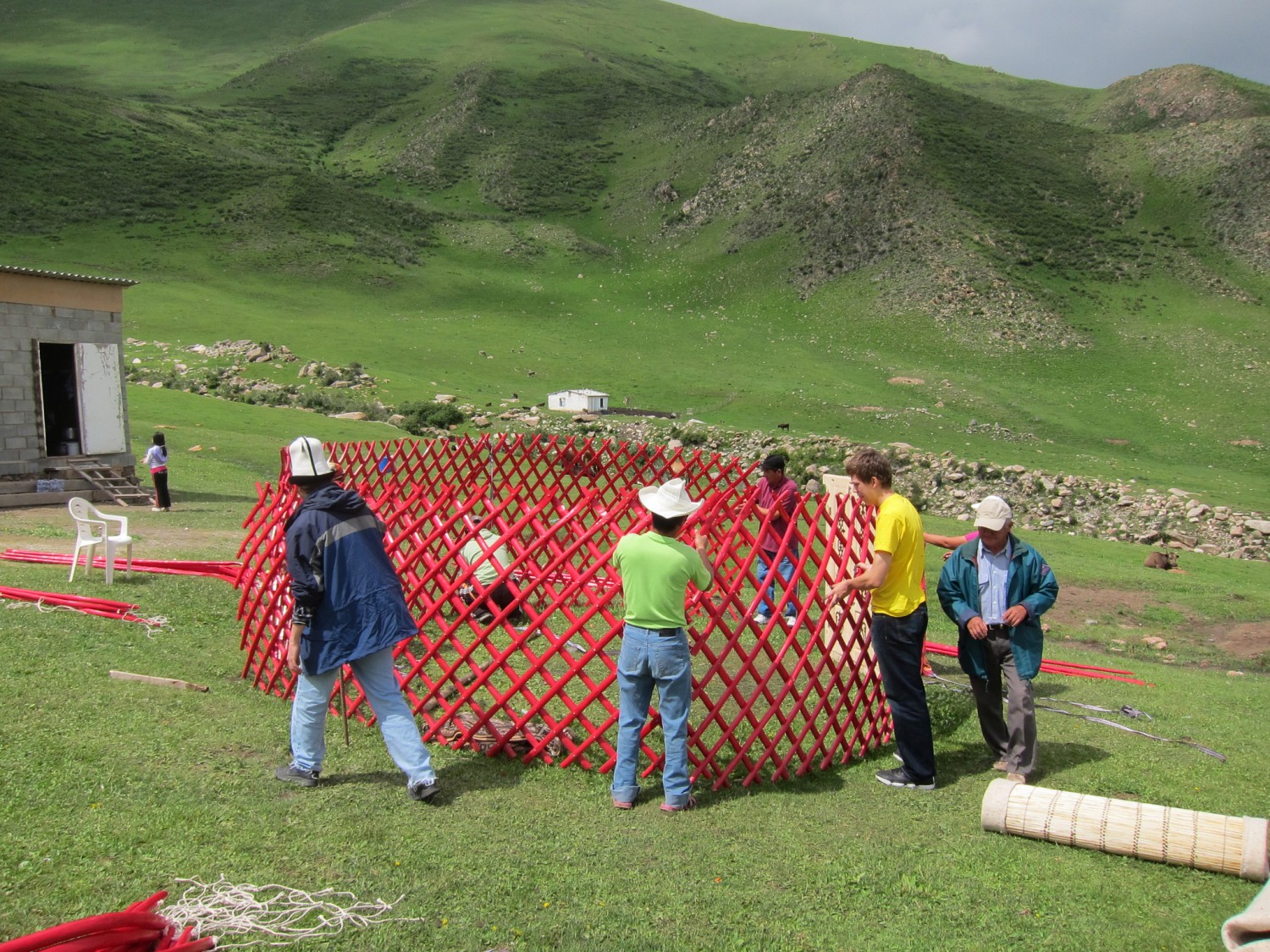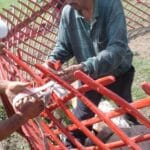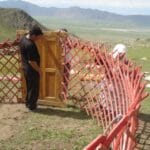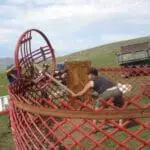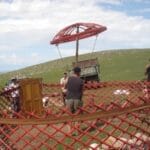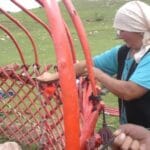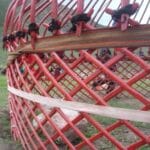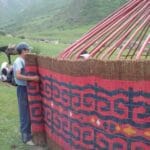Yurts are felt-covered, portable housing that have long been used throughout Central Asia. Although the region is urbanizing, the Kyrgyz still know and follow the traditional customs that surround the traditional yurt.
Hospitality is revered in the traditionally poor country of Kyrgyzstan. As soon as they see a new arrival, neighbors will come to meet the newcomers and to help unload the yurt from the truck (or horses). They also traditionally bring bread and “kumus” (a Kyrgyz national drink of fermented mare’s milk) to greet and support the new settlers in their new home.
Everyone works together to build the yurt, then talk and dine communally, sometimes slaughtering a sheep for the occasion.
Yurts are designed for nomadic life; they are constructed in such a way that they can be assembled, disassembled, and transported easily. A large group of experienced builders can assemble an average-sized structure in about an hour. The following pictorial shows the major steps of yurt building.
The coverings are made of wool and they help keep the yurt warm in winter (by holding in heat) and cool in summer (by blocking out the hot Kyrgyz sun). At the same time, the wool is porous and so can “breathe,” so the yurt is seldom stuffy and always well-ventilated. The felt is reinforced with matting made from thick stalks of prairie grass. The mat is known as “chyi.”
Each felt covering has a separate name. That for the roof is known as a “tuurduk,” and the wall-coverings are “jabuk.” There is also a special covering which lays over the door (for additional insulation) known as “eshik jabuu.”
Finally, any furniture, belongings, decorations, etc. are moved in and arranged. Some yurts are elaborately decorated (such as the one pictured right) while others a very simple (like the yurt pictured at the beginning of this article).
Many Kyrgyz still live in these traditional structures and it has become fashionable for campers in the area to rent the structures like they would hotel rooms. Given that urbanization and economic development are progressing fairly slowly in Kyrgyzstan and the steady increase they in tourism there, it is unlike that the yurt will disappear from that tiny Central Asian country anytime soon.
